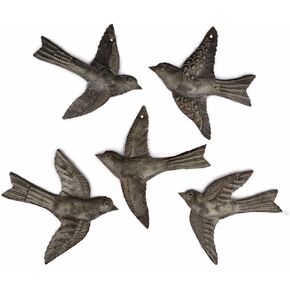- Shopping, made easy.
- /
- Get the app!
A brilliantly executed Celtic dragon, easily signified by the intricate infinity knot at the end of his tale might seem a strange image for a Haitian artist to create. A closer look, however, reveals that it is not so strange nor completely out of context. Just as the Celts have their powerful spirits, so do the Haitians. The dragon, in Celtic mythology initially represented the First Being. His power and wisedom were absolute and he was revered accordingly. But, the Celts, just as the Haitians, were Christianized and the old symbols - if they weren't banned altogether - were transformed and took on new meanings. The dragon came to represent Satan himself; a being which saints and knights alike fought and strove to vanquish. Haitians would themselves certainly recognize those changes necessitated by new faith. The spirits of their West African origins were appropriated and re-incarnated as Saint Workshops line the streets of the village and outside each are stacks of discarded 55-gallon drums awaiting transformation. To begin the process, the tops of the barrels are removed and the open barrel is stuffed with straw and dried banana leaves and then set ablaze. This burns out the residue and old paint and strengthens the metal. After the barrels have cooled, they are slit down the side, pried open, pounded flat and sanded down, giving the artist a smooth flat surface, much like a painter's canvas. The artist chalks his design onto the metal and then, using a hammer and chisel, begins the work of cutting the sculpture and giving it form, detail and dimension. When he is satisfied with his results, he pounds his signature onto the sculpture and seals it with a protective, weather-proof finish.Though it comes with a protective weather-proof coating, it will wear off over time outdoors and rusting can occur. You can prevent this from happening by spraying on a clear enamel coating. Once a year is plenty. Now, how easy is that?Thank you for your interest and support!
 Hummingbirds, Set of 2, Nature Inspired Small Wall Hanging Ornamental Birds, Fall Garden Home Decorations, Good Luck Accent Plaques, Handmade in Haiti 6 x 5.5 Inches
KWD 10.500
Hummingbirds, Set of 2, Nature Inspired Small Wall Hanging Ornamental Birds, Fall Garden Home Decorations, Good Luck Accent Plaques, Handmade in Haiti 6 x 5.5 Inches
KWD 10.500
 Collection City and States Detailed 65mm Snow Globes (Chicago)
KWD 8.500
Collection City and States Detailed 65mm Snow Globes (Chicago)
KWD 8.500
 SET OF 5 Birds Wall Decor, Cute Flying Birds, Indoor Outdoor, Handmade, Wall Decorations for Living Room, 6 Inch, Haitian Art
KWD 16.500
SET OF 5 Birds Wall Decor, Cute Flying Birds, Indoor Outdoor, Handmade, Wall Decorations for Living Room, 6 Inch, Haitian Art
KWD 16.500
 It's Cactus Metal Garden Art Sunflowers and Birds, Light Weight Steel Drum Haitian Decor, Home Wall Flower Plaque 5 X 33 Inches, Fair Trade (Sunflowers and Birds)
KWD 18.500
It's Cactus Metal Garden Art Sunflowers and Birds, Light Weight Steel Drum Haitian Decor, Home Wall Flower Plaque 5 X 33 Inches, Fair Trade (Sunflowers and Birds)
KWD 18.500